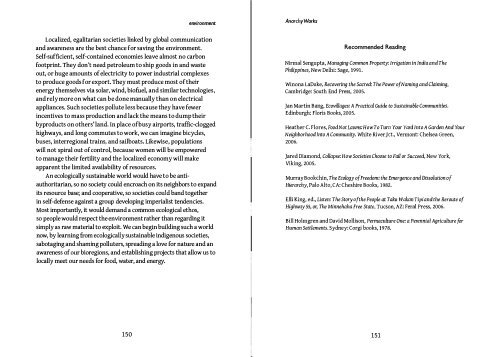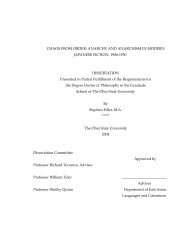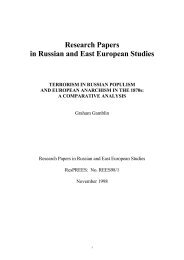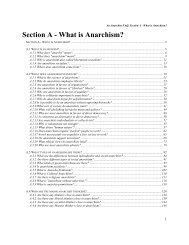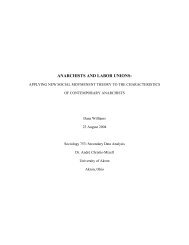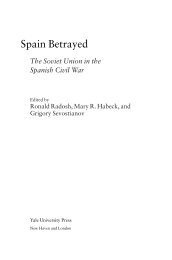Anarchy Works.pdf - Infoshop.org
Anarchy Works.pdf - Infoshop.org
Anarchy Works.pdf - Infoshop.org
Create successful ePaper yourself
Turn your PDF publications into a flip-book with our unique Google optimized e-Paper software.
environment<br />
<strong>Anarchy</strong> <strong>Works</strong><br />
Localized, egalitarian societies linked by global communication<br />
and awareness are the best chance for saving the environment.<br />
Self-sufficient, self-contained economies leave almost no carbon<br />
footprint. They don't need petroleum to ship goods in and waste<br />
out, or huge amounts of electricity to power industrial complexes<br />
to produce goods for export. They must produce most of their<br />
energy themselves via solar, wind, biofuel, and similar technologies,<br />
and rely more on what can be done manually than on electrical<br />
appliances. Such societies pollute less because they have fewer<br />
incentives to mass production and lack the means to dump their<br />
byproducts on others' land. In place of busy airports, traffic-clogged<br />
highways, and long commutes to work, we can imagine bicycles,<br />
buses, interregional trains, and sailboats. Likewise, populations<br />
will not spiral out of control, because women will be empowered<br />
to manage their fertility and the localized economy will make<br />
apparent the limited availability of resources.<br />
An ecologically sustainable world would have to be antiauthoritarian,<br />
so no society could encroach on its neighbors to expand<br />
its resource base; and cooperative, so societies could band together<br />
in self-defense against a group developing imperialist tendencies.<br />
Most importantly, it would demand a common ecological ethos,<br />
so people would respect the environment rather than regarding it<br />
simply as raw material to exploit. We can begin building such a world<br />
now, by learning from ecologically sustainable indigenolls societies,<br />
sabotaging and shaming polluters, spreading a love for nature and an<br />
awareness of Ollr bioregions, and establishing projects that allow us to<br />
locally meet our needs for food, water, and energy.<br />
Recommended Reading<br />
Nirmal Sengupta, Managing Common Property: Irrigation in India and The<br />
Philippines, New Delhi: Sage, 1991.<br />
Winona LaDuke, Recovering the Sacred: The Power of Naming and claiming,<br />
Cambridge: South End Press, 2005.<br />
Jan Martin Bang, Ecovillages: A Practical Guide to Sustainable Communities.<br />
Edinburgh: Floris Books, 2005.<br />
Heather C. Flores, food Not Lawns: How To Turn Your Yard Into A Garden And Your<br />
Neighborhood Into A Community. White River Jet., Vermont: Chelsea Green,<br />
2006.<br />
Jared Diamond, Collapse: How Societies Choose to Fail or Succeed, New York,<br />
Viking, 2005.<br />
Murray Bookehin, The Ecology of Freedom: the Emergence and Dissolution of<br />
Hierarchy, palo Alto, CA: Cheshire Books, 1982.<br />
Elli King, ed., Listen: The Story Df the People at Taku Wakan Tipi and the Reroute of<br />
Highway 55, or, The Minnehaha Free State, Tucson, AZ: Feral Press, 2006.<br />
Bill Holmgren and David Mollison, Permaculture One: a Perennial Agriculture for<br />
Human Settlements. Sydney: C<strong>org</strong>i books, 1978.<br />
150<br />
151


